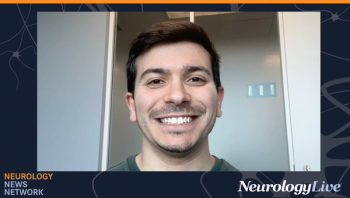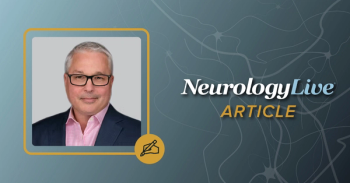
Fingolimod Provides Consistent Efficacy in Patients With MS Irrespective of Migraine
Results of a pooled analysis of 3 clinical trials suggest that the magnitude of fingolimod’s treatment effect in MS is not affected by the presence of migraine or headache in patients.
M. Alissa Willis, MD
Results of a pooled analysis demonstrated the superiority of fingolimod (Gilenya, Novartis) over placebo and interferon beta-1a (IFNß-1a) in patients with multiple sclerosis (MS) both with and without migraine or headache. Notably, the rate of study headache was lower among those with a history of migraine or headache than those without.
Patients treated with 0.5-mg fingolimod with a history of migraine (n = 116) or headache (n = 198) experienced respective rates of headache of 21.6% (incidence rate per 100 patient-years, 16.3) and 20.2% (incidence rate, 16.3), compared to 25.2% (incidence rate, 21.5) in those without a history of migraine or headache.
Lead author M. Alissa Willis, MD, staff neurologist, Cleveland Clinic Mellen Center for Research and Treatment in MS, and colleagues noted that “patients with a history of migraine or headache generally reported a similar rate of on-study headache regardless of treatment.” Willis and colleagues presented the data in a poster at the
Previous studies have suggested that patients with MS are 2 to 3 times more likely than the general population to experience migraine, with many of these patients being highly symptomatic compared to those with MS who do not have migraine. These symptoms can include optic neuritis, anxiety, depression, and fatigue, among others. The study data on fingolimod’s impact on patients with comorbid MS and migraine is very limited.
This analysis included data for up to 2 years of follow-up from the FREEDOMS, FREEDOMS-II, and TRANSFORMS studies. In total, 945 patients with MS were in the migraine (n = 394) or headache (n = 551) subgroups, making up 10.6% and 14.9%, respectively, of the cohort. The remaining 74.5% of patients (n = 2763) did not have migraine or headache at baseline. Those with migraine or headache were more likely to be women, slightly older, have a higher body mass index, were not treatment-naïve, and have lower T1 hypointense lesion volume and T2 lesion volume.
Those who were randomized to fingolimod with a history of migraine or headache tended to have lower volumes of gadolinium-enhancing lesions. “By contrast, for those randomized to IFNβ, gadolinium-enhancing lesion volume was higher in the migraine and headache subgroups than the non-migraine/headache subgroup,” Willis et al. wrote.
Annualized relapse rates (ARR) with fingolimod were 0.223 (95% CI, 0.160-0.312), 0.200 (95% CI, 0.153-0.263), and 2.207 (95% CI, 0.182-0.236) for those with migraine, headache, and without either, respectively. In comparison, those randomized to placebo with migraine (n = 102), headache (n = 135), or without either (n = 551) had respective ARRs of 0.315 (95% CI, 0.231-0.428), 0.457 (95% CI, 0.366-0.572), and 0.463 (95% CI, 0.409-0.524); and those administered IFNß-1a with migraine (n = 24), headache (n = 41), or without either (n = 368) had respective ARRs of 0.531 (95% CI, 0.282-0.998), 0.439 (95% CI, 0.259-0.741), and 0.427 (95% CI, 0.354-0.515).
The ARR for the combined groups with migraine and headache treated with fingolimod, placebo, and IFNß-1a were 0.219 (95% CI, 0.176-0.272), 0.393 (95% CI, 0.326-0.475), and 0.457 (95% CI, 0.301-0.695), respectively.
“Fingolimod provided consistent efficacy benefits over placebo and IFNβ in patients with relapsing MS with or without migraine or headache at study entry. Based on ARR, the magnitude of treatment effect was not affected by the presence of migraine or headache,” Willis and colleagues wrote.
The investigators detailed that the rates of adverse events (AEs) appeared to be slightly higher among patients with than without migraine or headache. Incidence ratios (IRs) for any AE by treatment were generally higher in migraine and headache subgroups versus the non-migraine/headache subgroup. Those IRs were 827 and 545 compared to 343, respectively, for fingolimod-treated patients; 399 and 509 compared to 360, respectively, for those on placebo; and 1030 and 5059 compared to 551, respectively, for those on IFNß-1a.
For more coverage of CMSC 2019,
REFERENCE
Willis MA, Conway D, Berkovich R, Men X, Kolodny S, Cheadle A. Post hoc Analyses of Clinical Outcomes in Patients With and Without Migraine/Headache in the Pooled FREEDOMS, FREEDOMS II and TRANSFORMS Populations. Presented at: 2019 CMSC Annual Meeting. May 28-June 1, 2019; Seattle, WA. Abstract DXT24.
Newsletter
Keep your finger on the pulse of neurology—subscribe to NeurologyLive for expert interviews, new data, and breakthrough treatment updates.



























